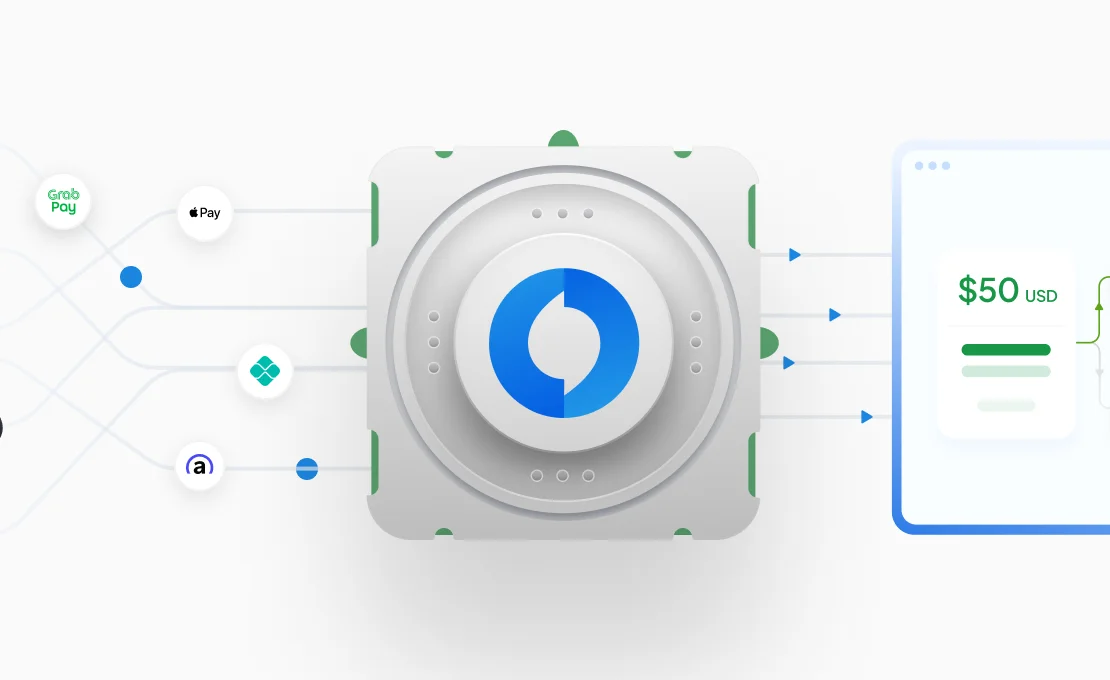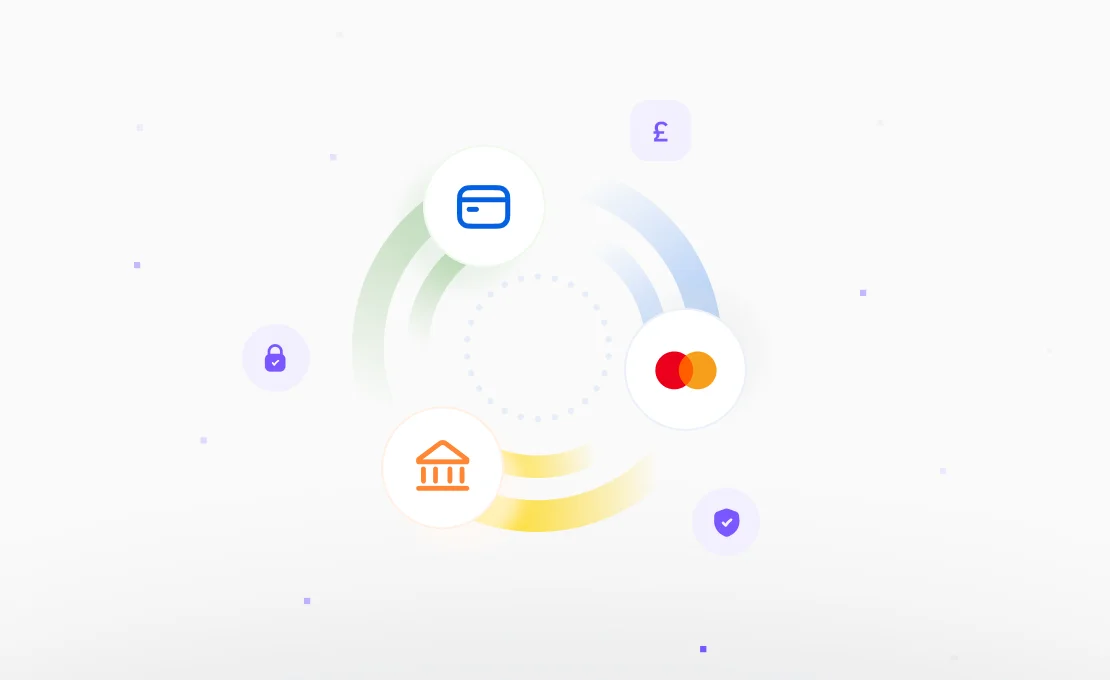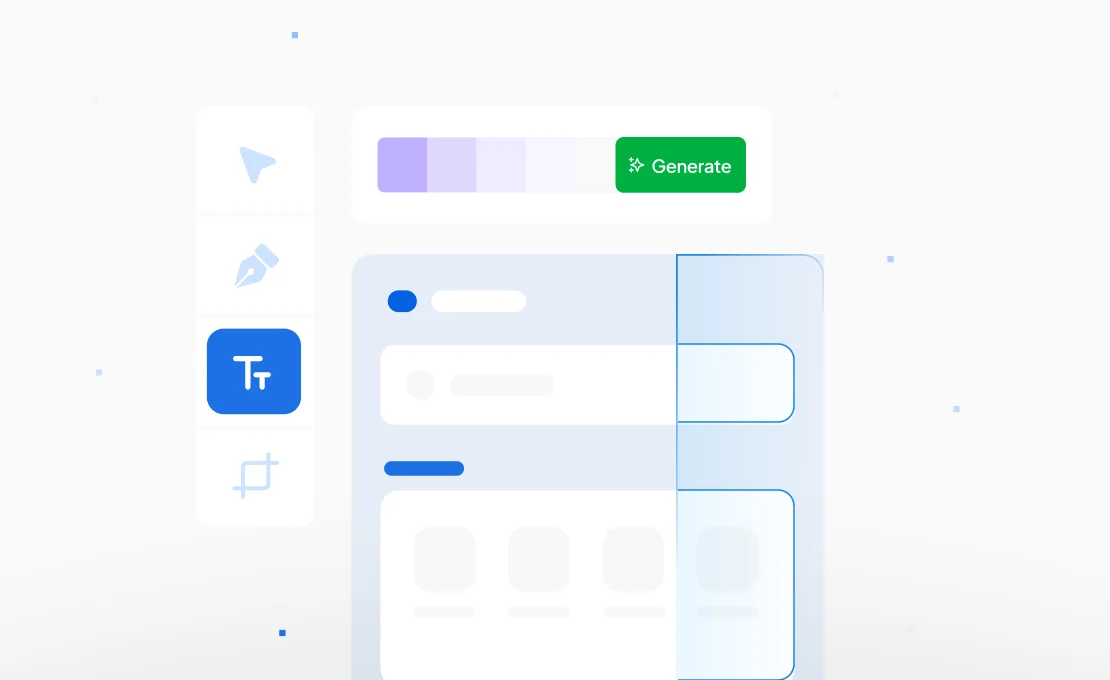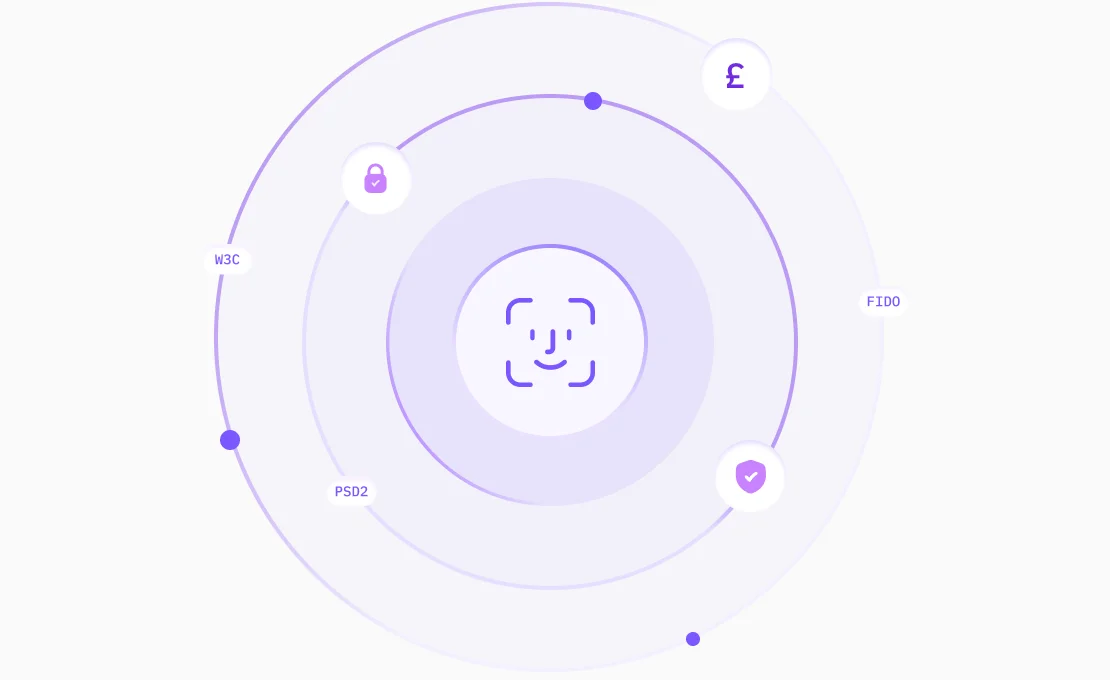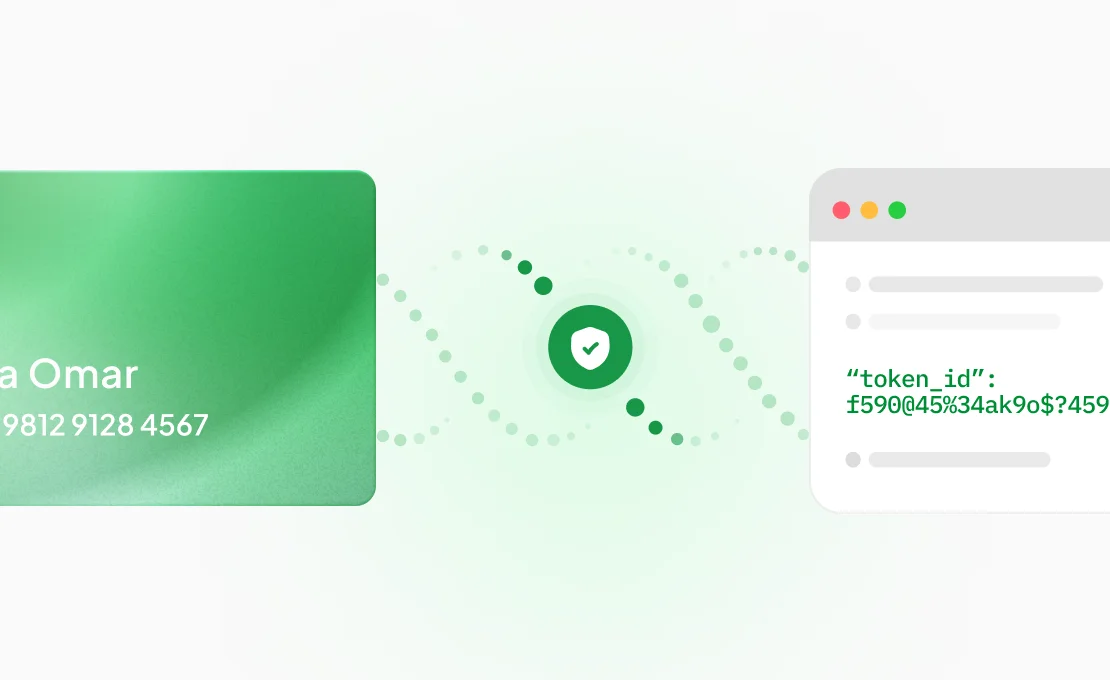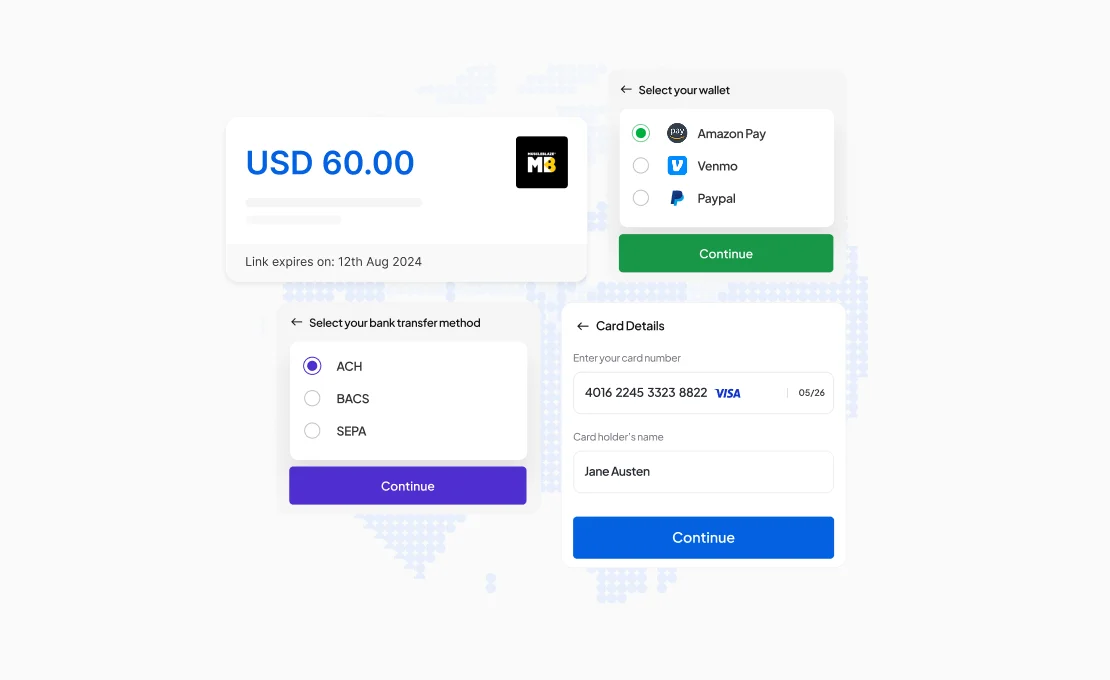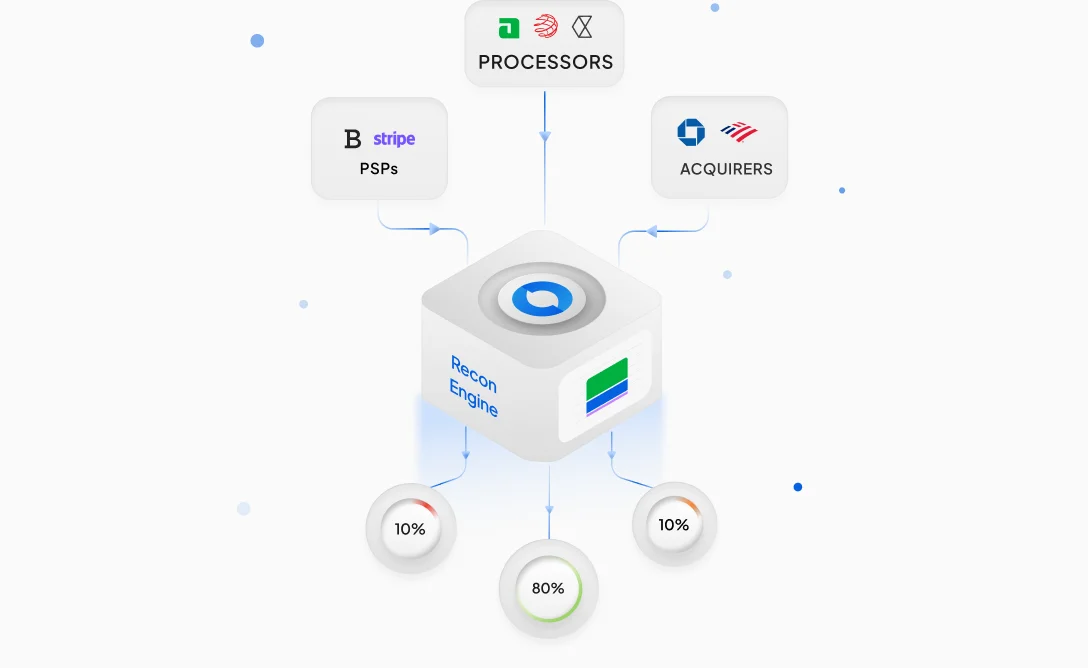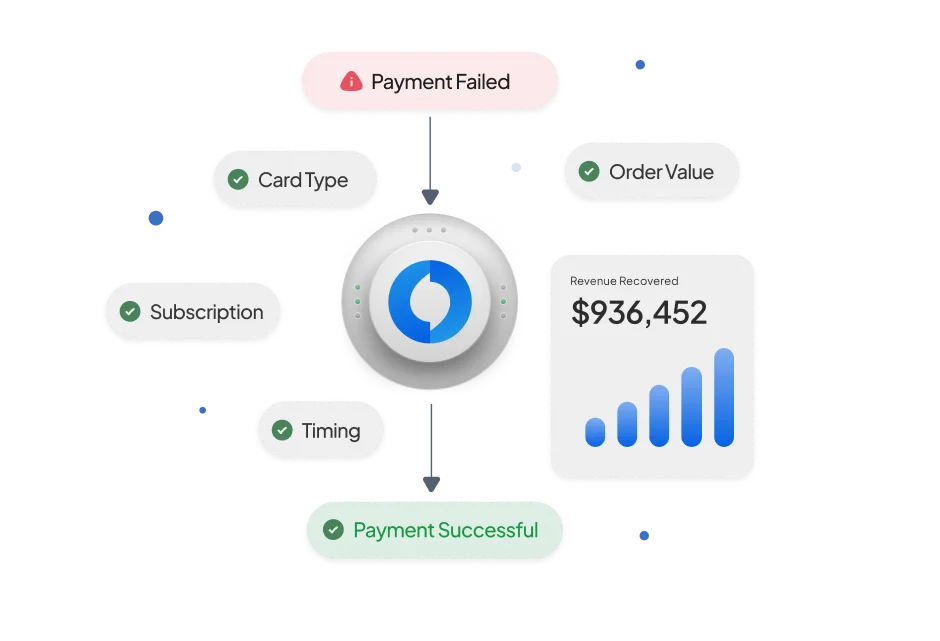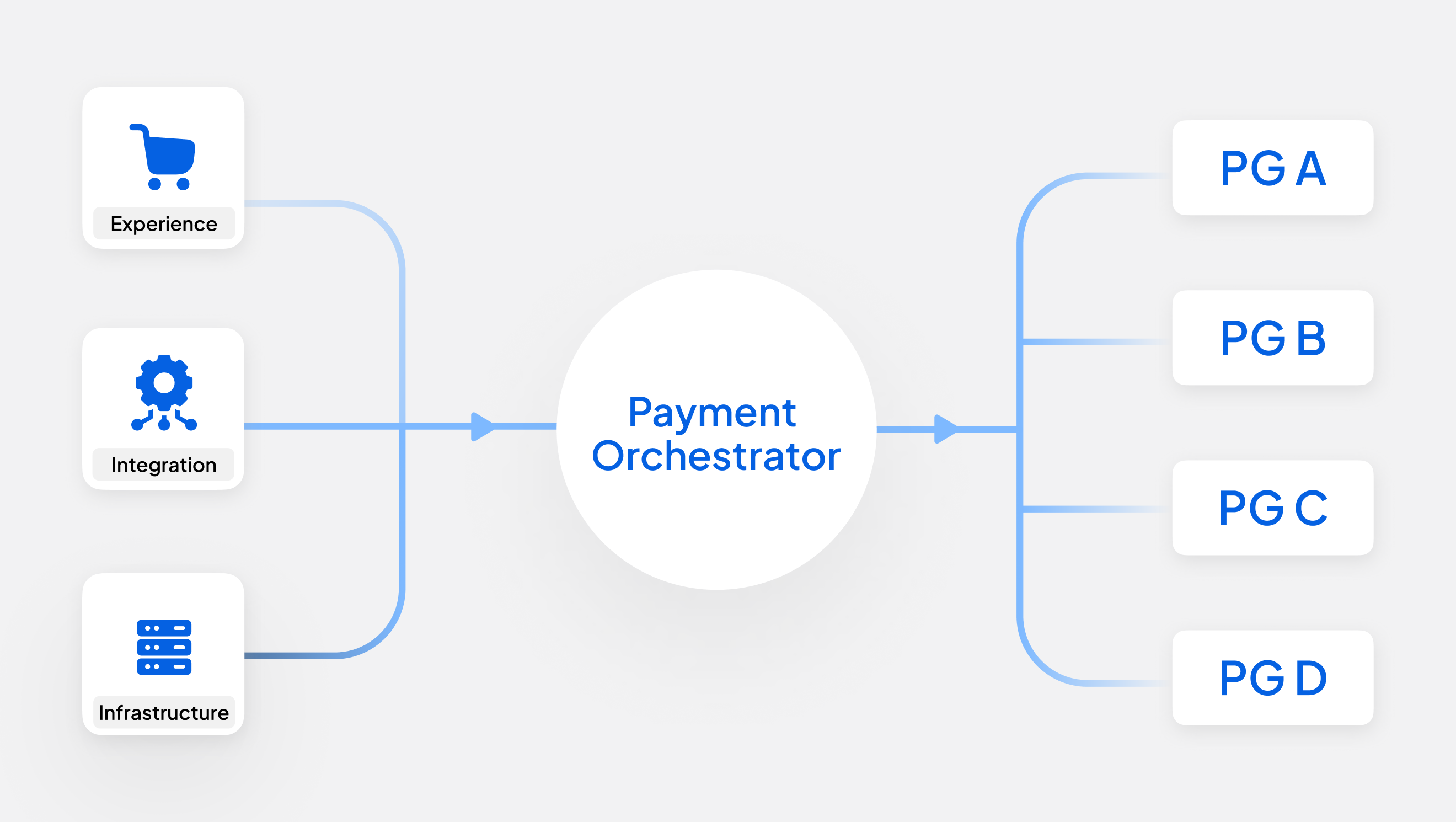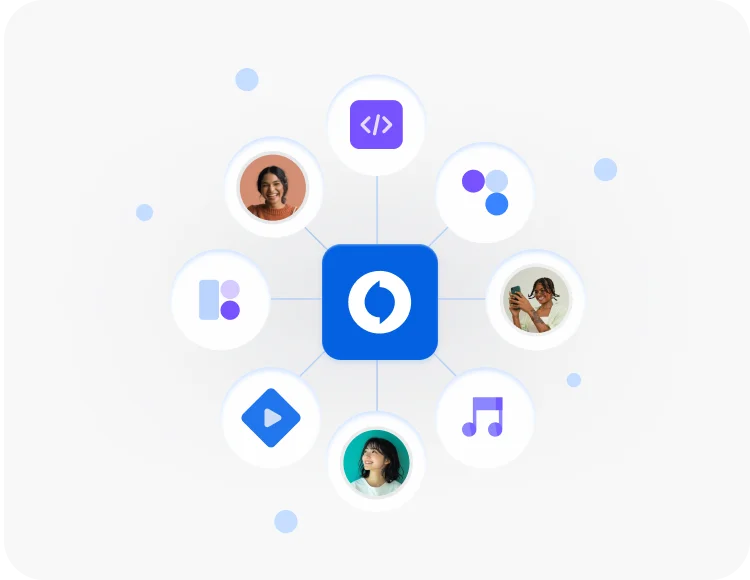The checkout page is the most important step of a buyer’s journey for a business. This is where all the marketing/sales spends convert into actual revenue. But what if after doing all the hard work of bringing a customer to your website/app, the buyer drops-off during checkout due to poor checkout experience.
This happens millions of times every day on e-commerce websites/apps around the world. The average cart abandonment rate stands at 70.19%, which means seven out of ten customers leave without completing their purchase. That's a huge revenue loss for a merchant.
But here's the good news: merchants can fix this by implementing an effective checkout optimization strategy. When you streamline your checkout process, you're not just improving user experience – you're directly impacting your bottom line. Even small improvements can lead to significant revenue increases.
What Is Checkout Optimization?
Checkout optimization is the process of improving every element of your checkout experience to make it smooth and frictionless. Think of it as removing roadblocks between your customer's intent to buy and their completed purchase.
This involves analyzing how customers move through your checkout flow, identifying pain points, and addressing them. You're essentially asking: "What's stopping my customers from completing their purchase, and how can I fix it?"
E-commerce checkout optimization goes beyond just making things look pretty. It's about understanding customer behavior, reducing cognitive load, and building trust at the most critical moment in the buying journey.
Consider checkout optimization as fine-tuning a race car. Every small improvement – better aerodynamics, reduced weight, improved handling – contributes to better overall performance. Similarly, each checkout enhancement you make can lead to a better customer experience.
Why Checkout Optimization is Important for Businesses
Reducing cart abandonment rate
A poor checkout experience makes a customer uncomfortable completing their purchase. When customers encounter a complicated checkout page or unexpected elements like a processing fee, they are likely to abandon their carts.
Checkout optimization ensures that the customer doesn't face any hurdles during the purchase process, providing a seamless experience that leads to reduced cart abandonment rates.
Reducing Customer Acquisition Costs
Every abandoned cart means your marketing spends haven’t converted into revenue for your business. If you spend $50 to acquire a customer who abandons a $200 cart, that's $50 down the drain.
Checkout optimization ensures your marketing spends actually convert into sales. By removing friction and making the purchase process smooth, you turn more visitors into paying customers, which directly improves your return on marketing investment and boosts your profit margins.
Increasing Customer Retention
A frustrating checkout experience creates negative associations with your brand that customers remember long after they leave your site. When a customer struggles through a complicated checkout process, they often won't return to try again. Research shows that 67% of customers who abandon due to poor checkout experience never come back.
Checkout optimization creates positive final impressions that encourage repeat business. When customers have a smooth, seamless checkout experience, they're more likely to return for future purchases.
Protecting Brand Image
The checkout process is where customers are most engaged with the brand and most vulnerable, sharing personal and payment information. A confusing, or unreliable checkout experience makes your brand appear unprofessional and untrustworthy.
Checkout optimization ensures your brand maintains a professional image at the most critical moment. A secure and streamlined checkout process reinforces customer confidence in your brand and builds trust that extends beyond the immediate purchase.
Maintaining Competitive Advantage
Poor checkout experiences essentially send potential customers to merchants that invested in better user experiences.
Checkout optimization helps merchants keep their customers instead of losing them to competitors. By providing a superior checkout experience, merchants can differentiate their business and capture sales that might otherwise go to competitors with smoother purchase processes.
Essential Tips and Best Practices for Checkout Optimization
1. Minimize the number of steps
Once the customer has landed on the checkout page, try to minimize the number of steps taken to complete the transaction. This ensures that you limit the number of steps where a customer can drop-off.
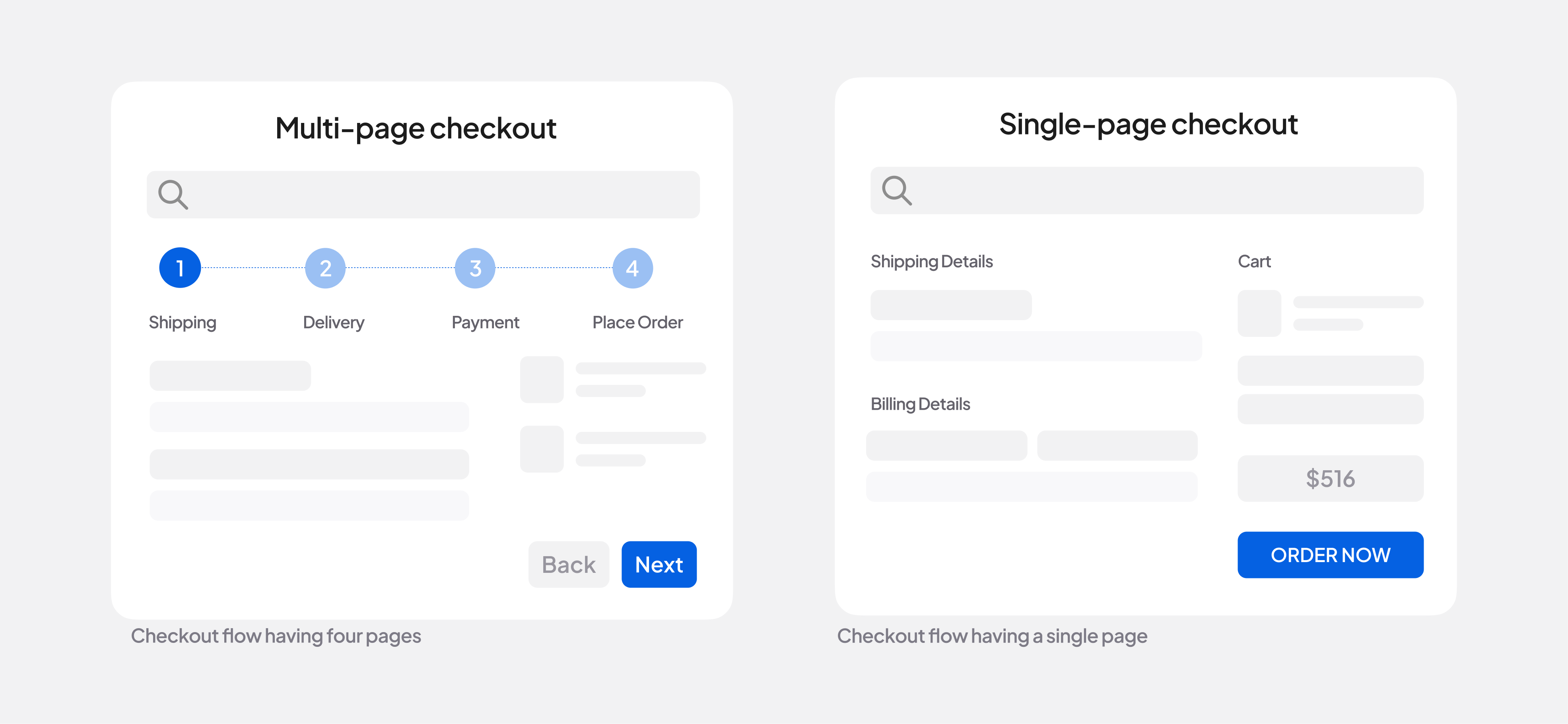
Implement a single page checkout, where the shipping, delivery and payment information gets collected on a single page. Another great way to reduce the number of clicks is by storing the customer’s payment information in a PCI-compliant token vault, this enables returning customers to complete their transactions without entering their payment information again.

Pro tip: Merchants can also reduce the number of clicks by implementing Quickpay. With Quickpay, customers see their preferred mode of payment as a widget on the checkout page—streamlining the checkout experience. Explore Juspay’s checkout experience suite to know more about Quickpay.

2. Implement Guest Checkout
Forcing a customer to mandatorily create an account to complete the transaction reduces conversions significantly. Research from Baymard Institute shows that 24% of customers abandon carts when required to create an account.
To minimize friction during checkout, businesses should allow customers to complete purchases as guests. Customer information can still be gathered after the order is placed. Simple prompts like “get email updates on your order” or “track your order” are effective ways to collect this data. Merchants can also enable OAuth login options, allowing users to sign in via Gmail or other social platforms. This approach helps simplify the sign-up/login process and lowers entry barriers, ultimately improving conversion rates.
3. Provide Multiple Payment Options
With modern payment options like digital wallets, Buy Now Pay Later (BNPL), and Real-Time Payments (RTP) gaining traction, customers' preferred payment methods are increasingly shifting in their favor, as they offer more convenience.
A study by the Federal Reserve Payments Study (FRPS) shows a significant growth in alternative payment methods within the U.S., with mobile wallet transactions rising from 2.9 billion in 2018 to 14.4 billion in 2022.
The absence of local or alternative payment options can become a barrier, contributing to cart abandonment. Nearly 13% of U.S. shoppers leave their carts due to limited payment methods.
Businesses should enable local and alternative payment methods for their customers, which can vary region by region. Providing these options ensures a smoother checkout experience for diverse customer segments.
Juspay’s orchestration engine enables seamless integration with over 300 payment service providers and local/alternative payment options worldwide—all through no-code implementation.
4. Display Total Costs Upfront
Unexpected costs such as shipping fees, processing charges, or handling costs can demotivate customers to complete their purchase and ultimately abandon their carts. Studies show that nearly 48% of U.S. shoppers cite high extra costs as the primary reason for cart abandonment.
To address this, it's important to be transparent about all additional charges early in the checkout process. Consider offering free shipping or attractive discounts to offset these extra costs and encourage conversions.
5. Build a Native Checkout Experience
A disjoint checkout experience where the design looks nothing like the rest of your website or app can make customers uncomfortable in providing their personal and payment information leading to drop-offs.
To build trust and increase conversions, your checkout page should mirror the overall design of your site or app. Matching elements like colors, fonts, button styles, and layout helps create a seamless, familiar experience that encourages customers to complete their purchase.
With Juspay’s Checkout Experience Suite, merchants can build a checkout page design that matches their brand to drive more conversions.
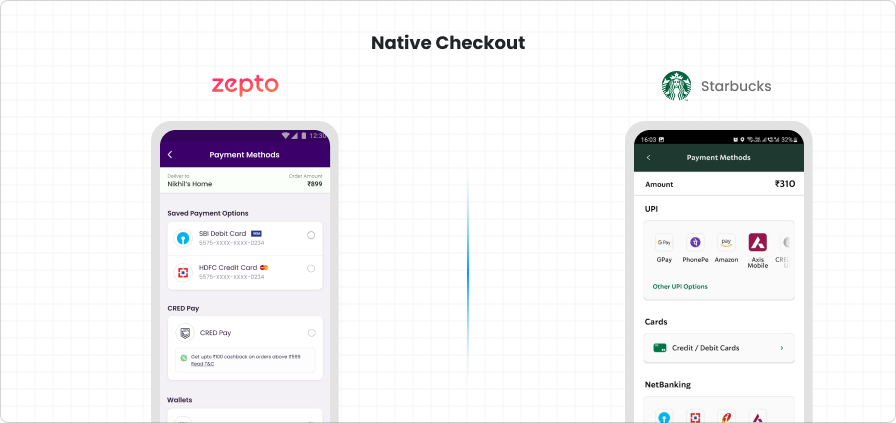
6. Build Trust and Security
With the rise in online fraud, customers are becoming increasingly vigilant about protecting their financial information. Nearly 25% of U.S. shoppers abandon their carts due to concerns over the security of sharing their card details.
To build trust, businesses must have an active SSL certificate and ensure their website complies with PCI standards. Additionally, businesses should follow regional data privacy laws, such as the GDPR for those operating in Europe.
Displaying clear indicators of regulatory compliance on the checkout page can go a long way in reassuring customers and encouraging them to complete their purchase.
7. Provide Offers and Discount Coupons
Strategic offers and discount coupons during checkout can be the final push customers need to complete their purchase. Providing offers and discounts on first-time purchases, free shipping thresholds ("Spend $25 more for free shipping"), bulk purchases, seasonal or holiday promotions or abandoned cart recovery can increase conversion rates.
Juspay’s Offers Engine empowers businesses to create, manage, and optimize dynamic promotional campaigns in real time without writing a single line of code. Whether it’s cashback, discounts, or personalized deals, the engine offers complete flexibility and automation, enabling you to launch high-converting offers tailored to different customer segments, payment methods, or purchase behaviors all from a single, intuitive interface.
8. Optimize Loading Speed
Every second counts in checkout. Slow loading times directly correlate with higher cart abandonment rates.
Speed optimization techniques:
- Compress images and optimize file sizes
- Use content delivery networks (CDNs)
- Minimize HTTP requests
- Implement lazy loading for non-critical elements
- Choose fast, reliable hosting
Target benchmarks:
- Page load time: Under 3 seconds
- Time to interactive: Under 5 seconds
- Largest contentful paint: Under 2.5 seconds
9. Implement Smart Error Handling
When a transaction fails, how you handle them can make or break the conversion. Businesses should implement a fallback strategy to retry failed payments.
With Juspay’s payment orchestration platform, merchants can define rules that automatically route transactions to a backup payment service provider if the primary one fails or is unavailable.
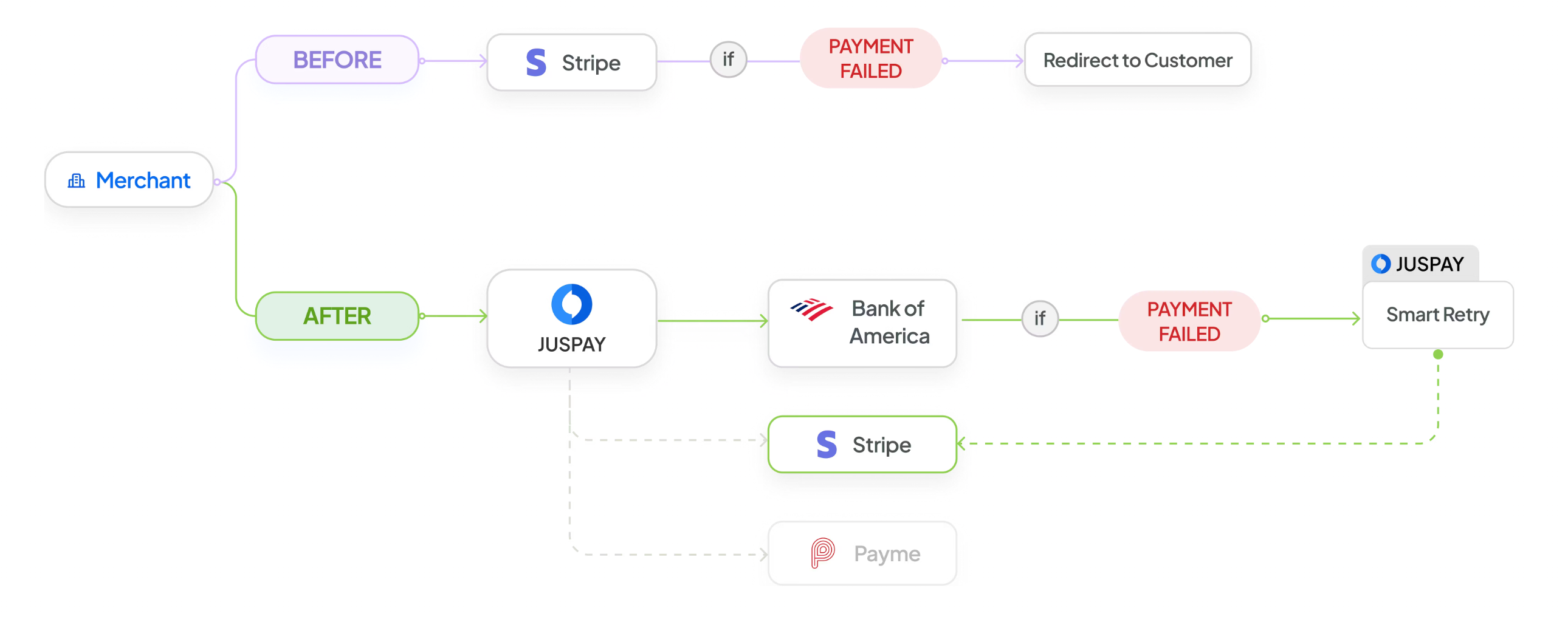
10. A/B Testing and Continuous Improvement
Checkout optimization isn't a one-time project – it's an ongoing process. What works for one merchant might not work for another, and customer preferences evolve over time.
Testing priorities:
- Button colors and copy
- Page layouts and field arrangements
- Payment method presentation
- Trust signal placement
- Mobile vs. desktop experiences
The Role of Payment Orchestrators in Checkout Optimization
We have already established that it is crucial for businesses to offer modern payment options like digital wallets, Buy Now Pay Later (BNPL), and Real-Time Payments (RTP). This means that the merchants would need to integrate with multiple Payment Service Providers (PSPs) to offer the aforementioned payment methods to their customers, resulting in higher operational costs as well as efforts.
This is where a payment orchestrator steps in. Payment orchestrators enable merchants to connect with multiple PSPs through a single integration. This way, merchants can provide their customers with a plethora of payment methods with just one integration. Additionally, payment orchestrators route transactions to the best available PSP, which leads to higher success rates, strengthening the checkout optimization strategy.
With a global payment orchestrator like Juspay, merchants can power their checkout optimization strategy with no-code integrations to 300+ PSPs and local payment methods, maximizing their success rates and streamlining their payment operations.
How Juspay Enabled Checkout Optimization for Flowbird - A Global Parking Payment System
Flowbird was facing three major challenges with their checkout - Redirection based checkout experience, cards stored with a single vault provider and limited integrations with alternative payment methods. This meant that a user would make almost 10 clicks on average to complete a transaction. This is where Juspay stepped in. Juspay's product suite enabled Flowbird to -
- Directly connect with Bank acquirers in US and Europe
- Offer One-tap payment experience for returning users
- Provide a redirection-free and native checkout experience for users
- Integrate with more alternate payment methods (APMs)
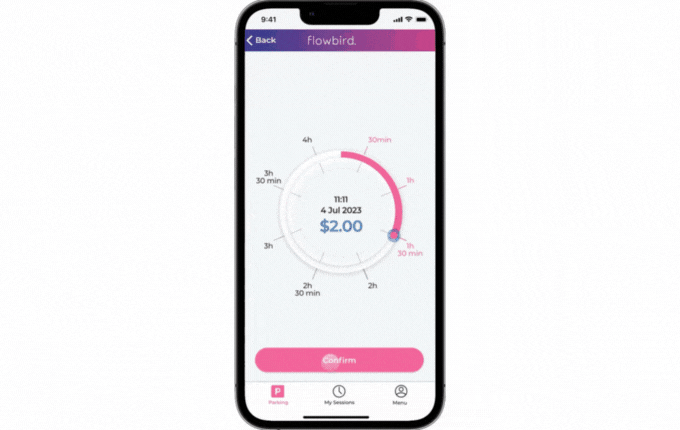
This resulted in a faster, easier checkout flow, bringing the number of clicks required to complete a transaction down from 10 to just 3, while ensuring an uptime of 99.99%.
Conclusion: Your Checkout Optimization Action Plan
Checkout optimization isn't just about reducing cart abandonment – it's about creating an experience that delights customers and drives business growth. Every improvement you make compounds over time, leading to higher conversion rates, increased revenue, and better customer satisfaction.
Start with the basics: simplify your checkout page design, offer guest checkout, and ensure your process works flawlessly on every device, OS and browser. Then, layer on advanced strategies like payment orchestration, personalization, and continuous testing.
Remember, checkout optimization is an ongoing journey, not a destination. Customer expectations evolve, new technologies emerge, and your business grows. The merchants who succeed are those who treat checkout optimization as a core business competency, not a one-time project.
Businesses that invest in checkout optimization see measurable returns. With cart abandonment rates around 70%, even small improvements can drive significant revenue increases. Whether you're processing thousands or millions in monthly transactions, optimizing your checkout experience is one of the highest-ROI investments you can make.
Don't let poor checkout experiences cost you customers and revenue. Start optimizing today, measure your results, and keep improving.
